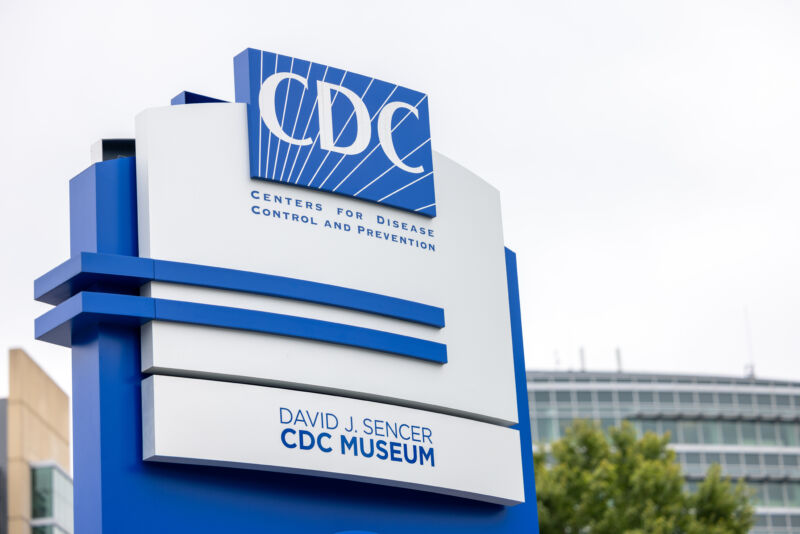
COVID-19 is becoming more like the flu and, as such, no longer requires its own virus-specific health rules, the Centers for Disease Control and Prevention said Friday alongside the release of a unified “respiratory virus guide.”
In a lengthy background document, the agency laid out its rationale for consolidating COVID-19 guidance into general guidance for respiratory viruses—including influenza, RSV, adenoviruses, rhinoviruses, enteroviruses, and others, though specifically not measles. The agency also noted the guidance does not apply to health care settings and outbreak scenarios.
“COVID-19 remains an important public health threat, but it is no longer the emergency that it once was, and its health impacts increasingly resemble those of other respiratory viral illnesses, including influenza and RSV,” the agency wrote.
The most notable change in the new guidance is the previously reported decision to no longer recommend a minimum five-day isolation period for those infected with the pandemic coronavirus, SARS-CoV-2. Instead, the new isolation guidance is based on symptoms, which matches long-standing isolation guidance for other respiratory viruses, including influenza.
“The updated Respiratory Virus Guidance recommends people with respiratory virus symptoms that are not better explained by another cause stay home and away from others until at least 24 hours after both resolution of fever AND overall symptom are getting better,” the document states. “This recommendation addresses the period of greatest infectiousness and highest viral load for most people, which is typically in the first few days of illness and when symptoms, including fever, are worst.”
“Residual risk”
The CDC acknowledged that the eased isolation guidance will create “residual risk of SARS-CoV-2 transmission,” and that most people are no longer infectious only after 8 to 10 days. As such, the agency urged people to follow additional interventions—including masking, testing, distancing, hygiene, and improving air quality—for five additional days after their isolation period.
“Today’s announcement reflects the progress we have made in protecting against severe illness from COVID-19,” CDC Director Dr. Mandy Cohen said in a statement. “However, we still must use the commonsense solutions we know work to protect ourselves and others from serious illness from respiratory viruses—this includes vaccination, treatment, and staying home when we get sick.”
Overall, the agency argued that a shorter isolation period would be inconsequential. Other countries and states that have similarly abandoned fixed isolation times did not see jumps in COVID-19 emergency department visits or hospitalizations, the CDC pointed out. And most people who have COVID-19 don’t know they have it anyway, making COVID-19-specific guidance moot, the agency argued. In a recent CDC survey, less than half of people said they would test for SARS-CoV-2 if they had a cough or cold symptoms, and less than 10 percent said they would go to a pharmacy or health care provider to get tested. Meanwhile, “The overall sensitivity of COVID-19 antigen tests is relatively low and even lower in individuals with only mild symptoms,” the agency said.
The CDC also raised practical concerns for isolation, including a lack of paid sick leave for many, social isolation, and “societal costs.”
The points are likely to land poorly with critics.
“The CDC is again prioritizing short-term business interests over our health by caving to employer pressure on COVID guidelines. This is a pattern we’ve seen throughout the pandemic,” Lara Jirmanus, Clinical Instructor of Medicine at Harvard Medical School, said in a press release last month after the news first broke of the CDC’s planned isolation update. Jirmanus is a member of the People’s CDC, a group that advocates for more aggressive COVID-19 policies, which put out the press release.
Another member of the group, Sam Friedman, a professor of population health at NYU Grossman School of Medicine, also blasted the CDC’s stance last month. The guidance will “make workplaces and public spaces even more unsafe for everyone, particularly for people who are high-risk for COVID complications,” he said.
COVID and flu
But, the CDC argues that the threat of COVID-19 is fading. Hospitalizations, deaths, prevalence of long COVID, and COVID-19 complications in children (MIS-C) are all down. COVID-19 vaccines are safe and effective at preventing severe disease, death, and to some extent, long COVID—we just need more people to get them. Over 95 percent of adults hospitalized with COVID-19 in the 2023–2024 respiratory season had no record of receiving the seasonal booster dose, the agency noted. Only 22 percent of adults got the latest shot, including only 42 percent of people ages 65 and older. In contrast, 48 percent of adults got the latest flu shot, including 73 percent of people ages 65 and older.
But even with the crummy vaccination rates for COVID-19, a mix of past infection and shots have led to a substantial protection in the overall population. The CDC even went as far as arguing that COVID-19 deaths have fallen to a level that is similar to what’s seen with flu.
“Reported deaths involving COVID-19 are several-fold greater than those reported to involve influenza and RSV. However, influenza and likely RSV are often underreported as causes of death,” the CDC said. In the 2022–2023 respiratory virus season, there were nearly 90,000 reported COVID-19 deaths. For flu, there were 9,559 reported deaths, but the CDC estimates the true number to be between 18,000 and 97,000. In the current season, there have been 32,949 reported COVID-19 deaths to date and 5,854 reported flu deaths, but the agency estimates the real flu deaths are between 17,000 and 50,000.
“Total COVID-19 deaths, accounting for underreporting, are likely to be higher than, but of the same order of magnitude as, total influenza deaths,” the agency concluded.
In all, the CDC was ready to fold SARS-CoV-2 into the gang of common seasonal respiratory viruses, with most cases mild and undiagnosed. “Viruses cause most acute respiratory illnesses, but it is rarely possible to determine the type of virus without testing, and oftentimes testing does not change clinical management,” the agency wrote.

